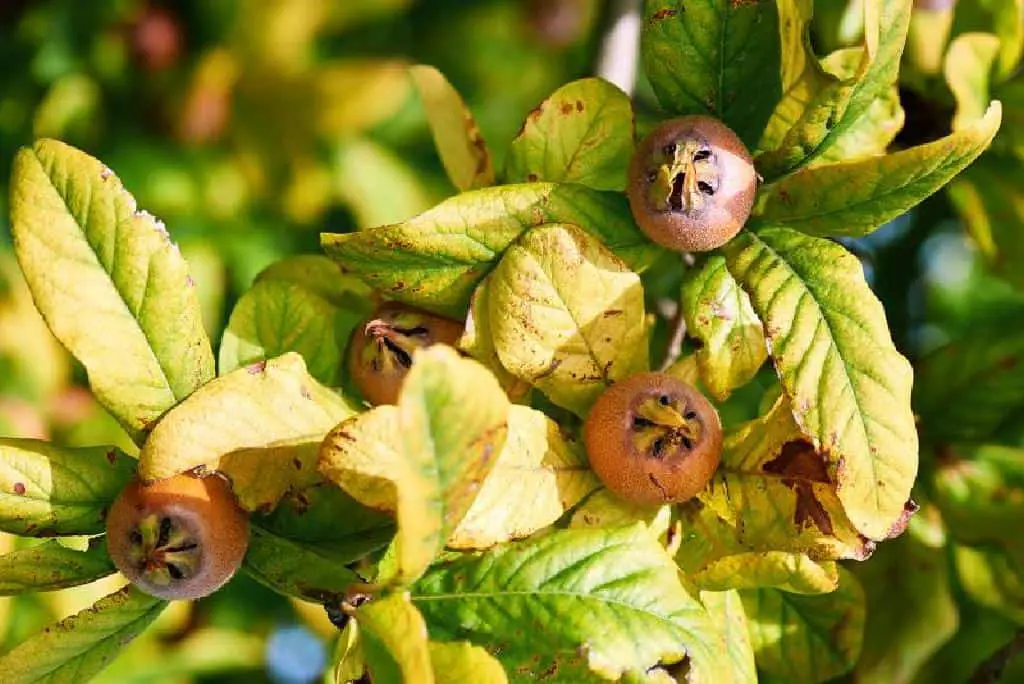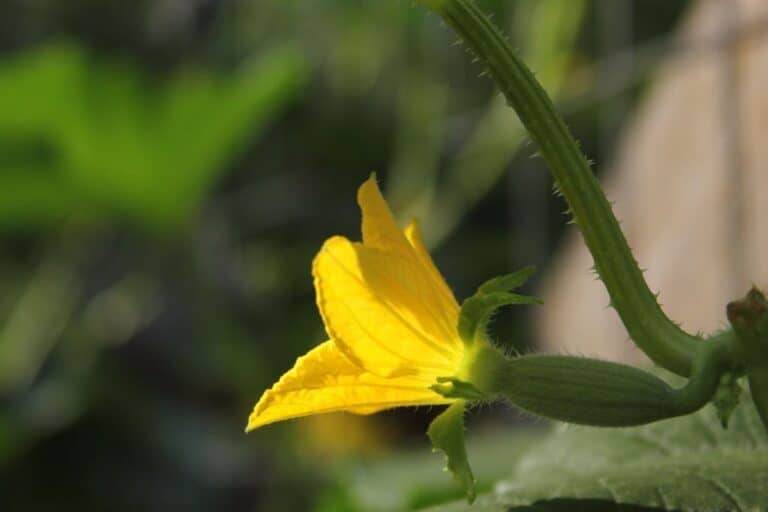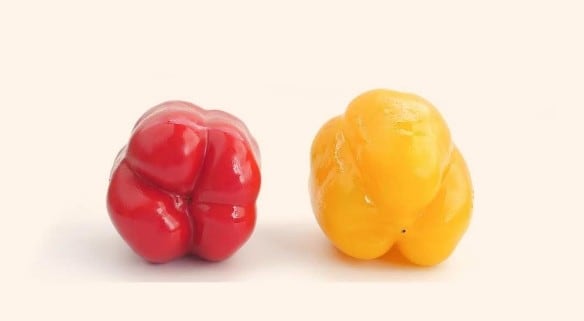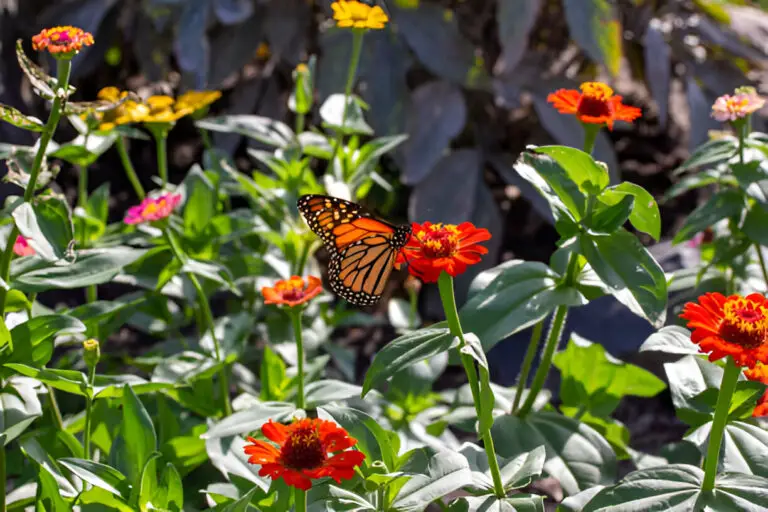Why the Medlar is the Ugliest Fruit with the Loveliest Flavor

When you hear about the medlar, chances are you’ve never tasted it, and if you’ve seen one, you probably didn’t want to. With its gnarled, crinkly skin and squat shape, it’s not what you’d call beautiful—at first glance, it might seem like something left forgotten in the back of your fridge.
But here’s the thing about the medlar: beneath that ugly exterior lies a treasure trove of flavor, a mix of cinnamon, vanilla, and applesauce all wrapped up in a fruit that feels like it stepped out of another era.
What is a Medlar?
The medlar, officially known as Mespilus germanica, is a small tree that bears fruit in the late fall and early winter. It’s a member of the rose family, just like apples and pears, and its fruits look somewhat like oversized rose hips.
These gnarly little globes are about the size of an inch-long ball, with a red-brown tint and a slightly pockmarked surface that suggests a tough outer shell. Yet they hide a sweetness that rivals the most familiar fruits on our shelves. It’s akin to discovering a precious gem, but in this instance, the unpolished aspect is incredibly tasty.
The Unique Appearance
The unique ripening process of medlar, known as “bletting,” is what sets it apart. Bletting isn’t a term we throw around much anymore, probably because the process feels like nature’s version of fermentation. After the fruit ripens in late autumn, it still isn’t ready to eat. To soften it, you have to let it sit through a few frosts—or mimic those frosts in your fridge.
Think of it as letting bananas ripen on the counter until they’re practically mush, except with medlars, which transforms into something akin to spiced applesauce. Once it ripens, you’ll notice that it changes from firm to soft and wrinkled, resembling a dried-up date. The flesh inside becomes the texture of thick applesauce, and that’s when the magic happens.
Ripeness vs. Perception
The ripening process of medlars is quite unique, often leaving many confused about the right time to harvest. Medlars, unlike most fruits, require a “bletting” process before their enjoyment. This means that they are best picked after the first frost, or left to soften naturally after being harvested. When the fruit’s skin turns wrinkled and dark, it’s finally ripe and ready to eat.
Interestingly, fermentation plays a subtle role in enhancing the flavor of medlars. As the fruit softens, its sugars break down, giving the medlar its signature applesauce-like texture and a rich blend of vanilla and cinnamon notes. This fermentation is natural and part of what makes medlars so unique.
People often believe that you can eat unripe medlars straight from the tree. However, eating a medlar before it has fully ripened results in a bitter, astringent experience. For an optimal taste, the fruit needs time to blet and soften.
How Does It Taste?
In fact, the medlar’s flavor is one of those surprises that makes you stop and take notice. I remember the first time I tasted it. It had been on my counter for weeks, looking more like compost. But once I bit into that soft, gooey flesh, it was like biting into the warmest, most comforting version of applesauce I’d ever had.
The taste was reminiscent of fall, with undertones of cinnamon and a hint of vanilla. Modern grocery stores may overlook medlar, but it remains a staple in culinary history books due to its complex flavor.
How to Eat Medlar Fruit
But how do you eat them? Well, medlars can be enjoyed fresh (after bletting), but they’re usually transformed into something even more special. People use them to make rich jams, gooey jellies, or even candied treats.
Medlar marmalade is a real treat, pairing perfectly with warm toast on a cold morning. I’ve even seen them served as a dessert alongside cheese, which may sound unusual, but the sweetness of the fruit plays off the sharpness of cheese in a delightful way. If you’re feeling adventurous, you could try turning them into a syrup to drizzle over pancakes.
One reason you don’t hear about medlars much anymore is that they’ve fallen out of fashion. No one has time for a fruit that looks rotten before it’s even ready to eat, right? But if you’re willing to take the time to blet them, you’ll see why they’re worth the wait. Don’t forget about their rich history!
The Romans brought the medlar to England from the Middle East and southeastern Europe. It’s had a place in gardens for centuries, and even Shakespeare and Chaucer used the medlar as a metaphor in their works. Back then, it was often a symbol of aging or decay, but in reality, it’s more a symbol of patience—waiting for the reward after time has worked its magic.
How to Grow Medlar Plant
Medlar trees are also fascinating to grow. These hardy trees bloom in late spring with lovely white flowers, and come autumn, they bless you with their strange yet beautiful leaves. wonderful fruits. A single tree can give you enough medlars for years of jam-making, and if you care for it properly, it’ll live for decades—sometimes even 50 years! You’ll want to plant them in the fall, letting the winter settle them into the soil.
They can grow up to 26 feet tall, though most people prune them down into more manageable sizes, shaping them into shrubs or keeping them as small trees. And here’s a little secret: medlar wood makes great firewood, so even when the tree’s not producing, it’s still giving.
The tree doesn’t require much fussing over, either. Once planted, it needs little fertilizer and not much pruning, except to keep its size in check. They’re also self-pollinating, so you only need one tree to enjoy a harvest.
You could plant Royal or Nottingham varieties—both are popular, and Nottingham even earned the Royal Horticultural Society’s Award of Garden Merit, making it a solid choice for home gardeners.
Conclusion
In an age where everything has to be perfect and beautiful, the medlar teaches us a valuable lesson. Sometimes, the best things take time, and they don’t always come in the prettiest packages.
So, if you’re looking for a fruit that brings a little old-world charm to your backyard, the medlar might be your new favorite plant. Not only will you get to enjoy its one-of-a-kind flavor, but you’ll also have a great conversation starter—because who doesn’t want to tell their guests about the “ugly” fruit that tastes like applesauce and has been around since Roman times?
So, this fall, why not plant a medlar tree? It’s the perfect project for those who enjoy a slower pace and appreciate the idea of nurturing something that might not give you instant gratification but will reward you tenfold in the end.






